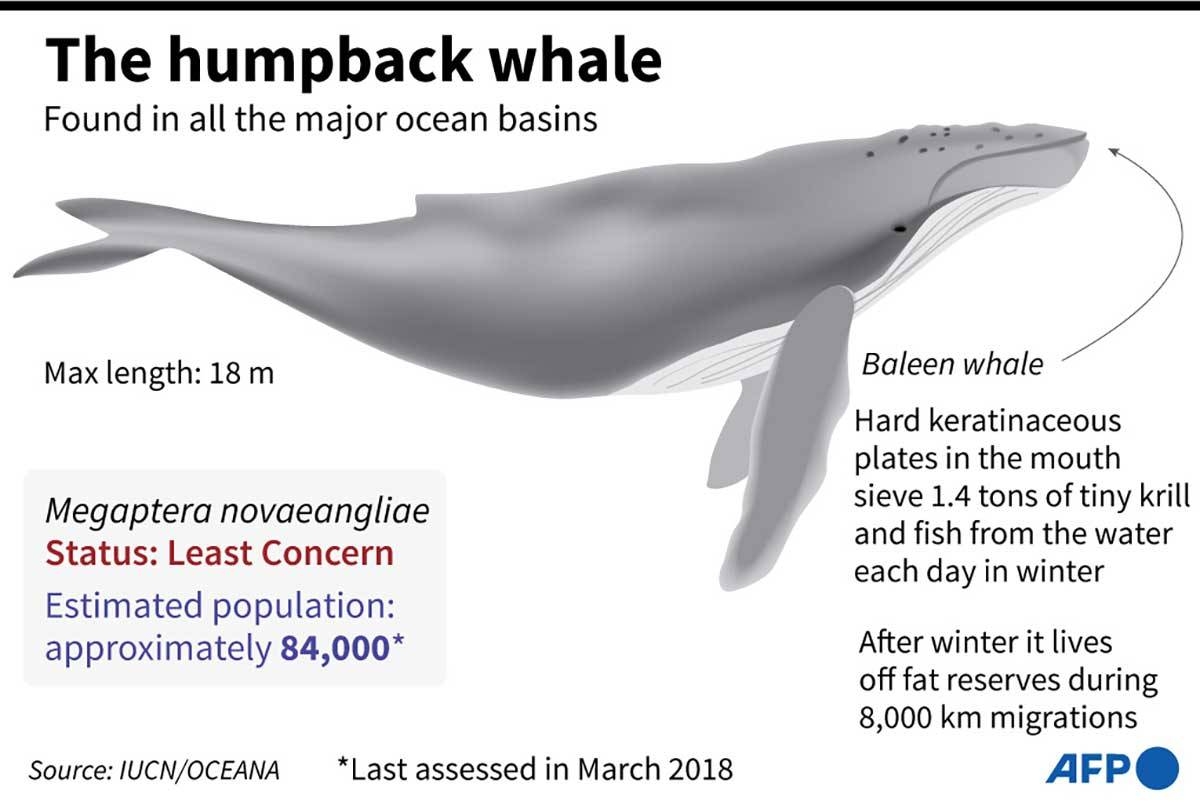The North Pacific humpback whale population has experienced a significant decline of 20 percent in less than a decade, and researchers believe that marine heat waves are the primary cause. This troubling finding, revealed in a study published in the journal Royal Society Open Science, paints a concerning future for these majestic sea mammals.
Thanks to conservation efforts and the cessation of commercial whaling in 1976, the humpback population in the region steadily increased until 2012. However, over the past decade, whale numbers have sharply declined, as reported by a team of 75 scientists who compiled the largest photo-identification dataset ever created for a large marine mammal. Using images of the whales’ unique tails, the team logged over 200,000 sightings of more than 33,000 individuals between 2002 and 2021.
Initially, it was widely assumed that the humpback population would eventually reach a natural “carrying capacity,” or the maximum number of whales the ocean can support, after which it would stabilize. However, instead of leveling off, the researchers observed a steep population decline. From 2012 to 2021, the number of humpbacks fell by 20 percent, from approximately 33,000 individuals to just over 26,600. The decline was even more pronounced for a subset of whales that wintered in Hawaii, with a 34 percent drop.
One of the key factors contributing to this decline is the marine heat wave that occurred from 2014 to 2016 in the Pacific northeast. This heat wave, the strongest and longest ever recorded, brought about significant changes in the marine ecosystem and the availability of humpback prey. The researchers believe that the extreme marine heat reduced the carrying capacity threshold for humpbacks, essentially crashing the ceiling on the whales rather than allowing them to reach it. As a result, an estimated 7,000 whales starved to death.
Furthermore, the inability of humpbacks to adapt their already flexible diet to the changing conditions is indicative of a larger issue with ocean health. The decline in the whales’ food supply has also affected other marine species, such as tufted puffins, sea lions, and seals. Additionally, some commercial fisheries have felt the impact of the warmer ocean, as it produces less food.
The Intergovernmental Panel on Climate Change predicts that marine heat waves, which are already becoming more frequent and intense, will continue to increase globally throughout this century. This highlights the urgent need for climate action to mitigate the effects of rising ocean temperatures and protect vulnerable marine species.
The humpback whale population has faced numerous threats throughout history, including whaling for their oil, meat, and baleen. By 1986, the International Union for Conservation of Nature (IUCN) listed the species as globally endangered. However, international restrictions on commercial whaling have allowed the global humpback whale population to recover to over 80,000 mature individuals.
While it is a success story that humpback whales are no longer in immediate danger of extinction, the changing oceans present a new reality that we must confront. The decline in the North Pacific humpback population serves as a stark reminder of the impact of climate change on marine ecosystems and the urgent need for conservation efforts and climate action to ensure the long-term survival of these magnificent creatures.
Source: The Manila Times








